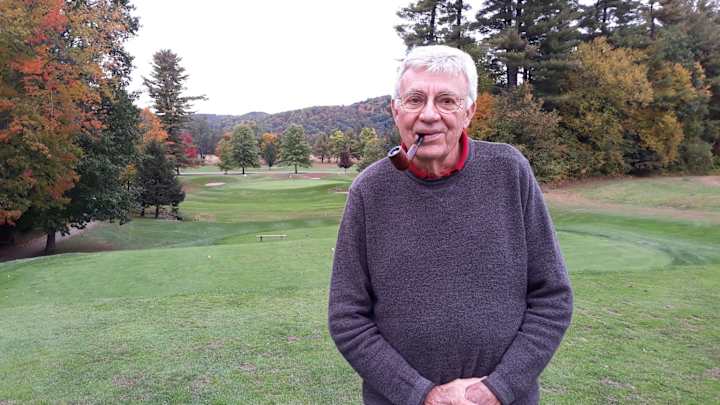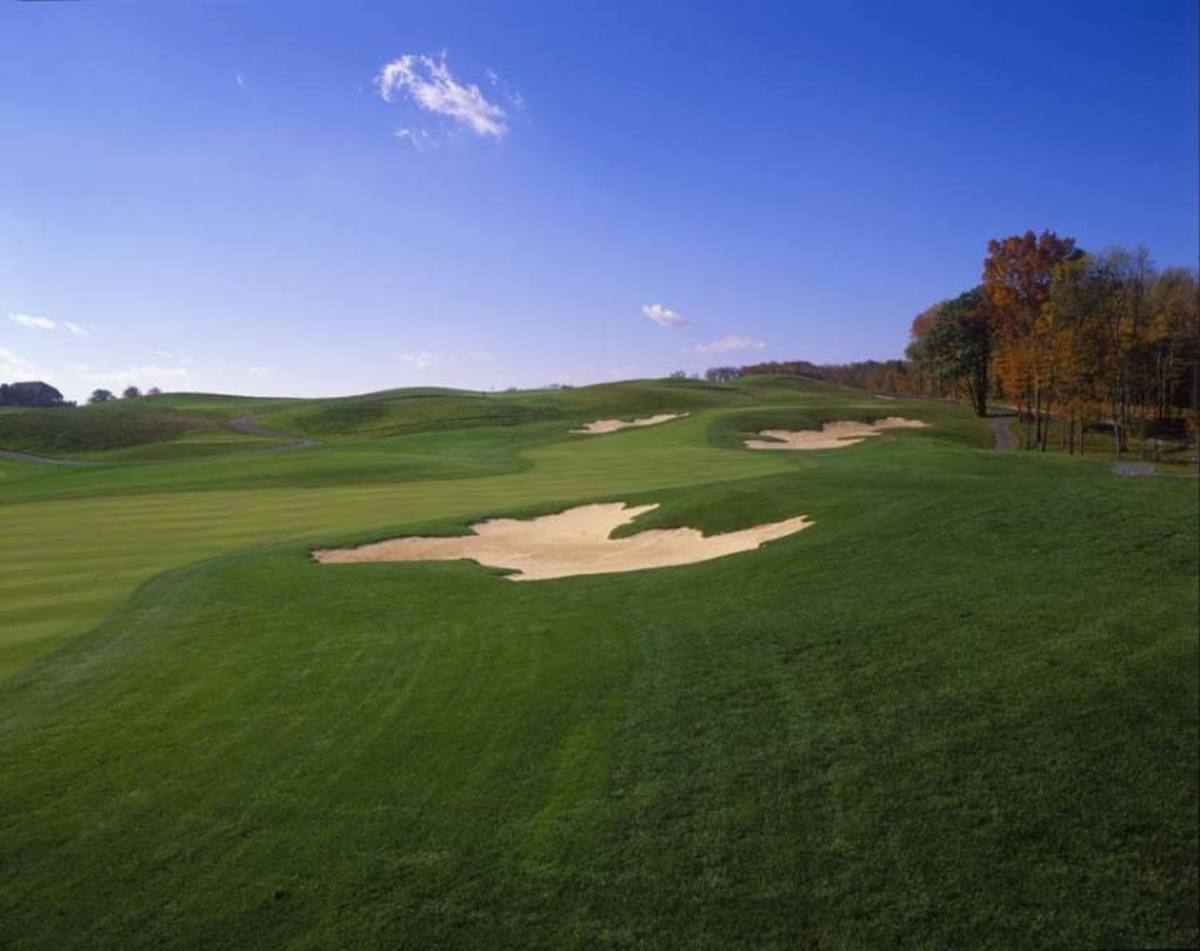Golf course architect Roger Rulewich's rules | Where to Golf Next

Playing a round with a golf course architect can be an education.
You never quite know when, without prompting, the placement of bunkers will be pondered or a discourse on mounding will occur: “You have to be careful with mounds. Certainly they can contain shots. But then there’s the backside …”
On this particular day, Roger Rulewich was opining while playing the Brattleboro Country Club in Vermont for the first time — even though back in 2000 his course architecture firm had drawn up plans to expand the course from nine to 18 holes.
“I didn’t know it at the time but three of us had submitted plans,” he said. “Eventually I was told our plan was different, and they figured if the other two had the same idea they must have been right.”
After the round Rulewich said, “I wish I’d had the chance to do it.”
He thought Brattleboro “a lovely course” overall, though he didn’t particularly care for the par-5 second or seventh holes, both of which featured blind shots from the tee. A triple bogey at the latter may not have helped, but after that debacle he placidly pulled out his near-ubiquitous pipe and said, “Time for a smoke.”

Thereafter the sole complaint was how difficult it was to find a good golf shoe in size 14AA. Turning 83 this month, slightly stooped from his once 6-foot-5-inch lean frame, Rulewich struggles with a game that used to obey him more, as his tidy 5-handicap would attest. If he can find them he’s not planning to hang up his golf shoes soon, but he is wrapping up his design career.
In mid-October, Rulewich was preparing to head to Spain for the first Robert Trent Jones Society meeting held outside the U.S. The Society was formed in 2004 to honor RTJ Sr., by any measure one of the 20th century’s most dominant course architects. Since 2005 the annual meetings have been held at Jones-designed courses for a few days of golf and talks by those with insights into the RTJ Sr. world.
Rulewich over-qualifies with such insights and, indeed, is one of three honorary members of the Society, along with Sr.’s two sons, Rees and RTJ Jr. Rulewich tries to attend all the annual get-togethers, but he noted that if Jr. showed up, then Rees likely would not, the brothers’ long-standing enmity apparently still in effect.
When the hefty Jones biography by James Hansen, A Difficult Par, appeared in 2014, Rees said to Rulewich, “The book was fine about my father, but you come off the best of anybody, Roger.”
It’s not hard to see why.
Rulewich remains one of the most unruffled and congenial individuals to ever lay out a golf hole. Until he hung out his own shingle in 1995 as The Roger Rulewich Group (subsequently Rulewich & Fleury Golf Design), Rulewich had labored behind the scenes for some 34 years as Jones Sr.’s chief lieutenant and the actual designer of many courses credited to RTJ.
Although a precise number is tricky to come up with, Jones worked on upwards of 400 courses in his career. Considering the sheer profligacy of the firm Rulewich may have been one of the busiest unsung architects in the game, able to keep engaged behind the scenes because, he said, Jones was a master at self-promotion. They were at a meeting one time when someone asked Jones how many courses he’d done altogether and Jones said, “Oh, about 500.”
“I’d been keeping a list of all the RTJ projects, and I was thinking, ‘I don’t have anything near 500,’” Rulewich said. “Then a couple weeks later we’re somewhere else and someone asks the same question — and now it was 600. I thought, ‘Whoops.’ I showed him the list one time and asked him to look it over but he would never verify it.”
That number would have put him well past Donald Ross in total number of courses created. “That’s probably what he was thinking,” Rulewich said.
The Society was naturally planning to play at the Club de Golf Sotogrande, the first course RTJ designed in Europe, back in the early 1960s, and where he learned the Golden Rule from the club’s founder, Joe McMicking.
“The two of them were arguing about tree removal or something of that sort when Joe impressed the Golden Rule on Jones. He said, “I’ve got the gold, so I make the rules,’” Rulewich recalled.
<<< >>>
People tend to overlook some of the fine work Rulewich did with his own firms, like Saratoga National in New York, Fox Hopyard in Connecticut, Meadow Brook in Rhode Island or his personal favorite, Ballyowen in New Jersey. Like many architectural firms, renovations were a big part of the business after the turn of the century. And sometimes it’s the ones that get away that really hurt. A four-course project in the Alentejo region of southern Portugal that was well underway in 2012 was a crusher.
“I was hopeful that was going to be an end-of-life project; there were only about two holes left that needed any kind of work at all,” he said. “Others were planted, greens were planted, my last trip over I was marking all the bunkering out. Looked like we were there. Then it died. Everything fell apart. It was a huge disappointment and frankly kind of killed my interest in working too much more.”
The Rulewich & Fleury firm still has some accounts receivable and payable, and there’s still some equipment to get rid of. But Rulewich’s partner, Dave Fleury, is keeping busy running two Massachusetts country clubs, Crestview in Agawam and Elmcrest in East Longmeadow. Rulewich now lives in Vermont and when not heading to the range to figure out his swing has become involved in local historical projects.

Rulewich concedes he’ll probably be best known for his work with Jones, and that’s fine with him. He was and remains pretty much content to stay in the background there. He has no memoir in the works.
“I had a lot of the work put on me when I was with Jones, but that was a great opportunity for me,” he said. “I didn’t need the exposure for myself.”
But when it comes to Alabama’s Robert Trent Jones Golf Trail, Rulewich says, “I’ve been asked so many times about it or told what a great job Jones did designing things I really have to let people know how that worked. Jones frankly had little to do with it other than PR.”
Rulewich thinks the Trail is probably his greatest accomplishment. And the sheer scale of the project — the current numbers are 468 holes at 26 courses in 11 sites across Alabama — with huge numbers of construction workers laboring on different sites continuously in the initial early 1990s push still boggles Rulewich’s mind.
“It was unbelievable,” he said. “It was incredible. I spent half my life down there for several years and it was probably the most exciting time of my life.”
